A questionnaire is an important part of every business-customer experience if you want to stay on top of your game. Reaching out to users of your products or services is a crucial part of your product development. If their answers are driving your decisions, you want to make sure that you ask all the right questions and get as many answers as possible. Let’s see how you can do that.
What is a questionnaire?
There is a lot of confusion around the term of a questionnaire, usually because it used interchangeably with the term “survey”. Put simply, a questionnaire is a set of questions used for research purposes. It can consist of both close-ended and open-ended questions. Close-ended questions are a staple of quantitative research that allows you to express the answers in numbers. Open-ended questions are a qualitative form of research that sheds light on quantitative results.
How does that make it different from the survey? A questionnaire is an integral part of the survey – the survey is an entire process of creating a survey sample and analyzing data. If we put this in terms of business use, the difference is:
If you need to research your potential or existing target market, state of the industry, of opinions and attitudes of the entire or parts of the population, you are going to run a survey. If you want to measure customer, employee, or product satisfaction to draw conclusions about an entire group of people, you are going to run a survey. If you want to prove or disprove a hypothesis, you will use a survey.
Elisabeth Price, a content specialist who supervises a team of remote authors at EssayPro writing service, claims that implementing customer satisfaction surveys has significantly improved the writers’ rating system, as well as the overall quality of their services. According to the gathered data, 16% of writers with the best performance were given top rankings and 20% bonus payments.
The information gathered through the questionnaire can be aggregated and used to draw conclusions. However, their primary purpose is to gather information about an individual and their own experience.
So, if you realized that what you need, after all, is a survey, continue here. If you want to create a questionnaire, keep reading.
How to make a questionnaire?
Although there are plenty of print-ready questionnaires you can find online, we suggest you create them on your own based on your specific business needs. On top of that, online questionnaires are easy to design, create, and distribute.
There are a few musts when it comes to questionnaires.
- Keep them short and straightforward
- Keep them visually simple
- Ask the right questions
- Be flexible with answers
Since the first two rules don’t require further explanation, since you want people to understand your questions and answer all of them, let’s focus on the types of questions you can use in a questionnaire.
Asking the right questions
The type of questions depends on the type and depth of information you need, as well as the amount of time your respondents have at disposal. Here are the options:
1. Closed-Ended Questions
Closed-ended questions are questions with predefined answers the respondents can choose from. Based on the type of answers at disposal, we can further divide them into:
- Dichotomous questions – questions that offer yes or no as an answer.
- Multiple-choice questions – questions that offer several predefined answers. Respondents have a choice to select one or more answers.

- Rating scale questions – similar to multiple choice questions, rating scale questions are designed to reflect the respondent’s impressions, opinions, and attitudes. For example, you can use a rating scale of 0-10, but it is of utmost importance to explain how each number on the scale reflects the respondent’s attitude.

If you use a certain rating scale in one question, it is recommended that you stick to it throughout the entire questionnaire for easier, consistent analysis of the answers.
- Likert scale questions – this type of question is one of the most popular and reliable ways to measure perceptions, attitudes, and opinions. Respondents can choose between 3 and 7 degrees on a rating scale, and each option can easily be adapted to your questions. The options usually range from one extreme (e.g. ‘strongly agree’) to another (e.g. ‘strongly disagree’).
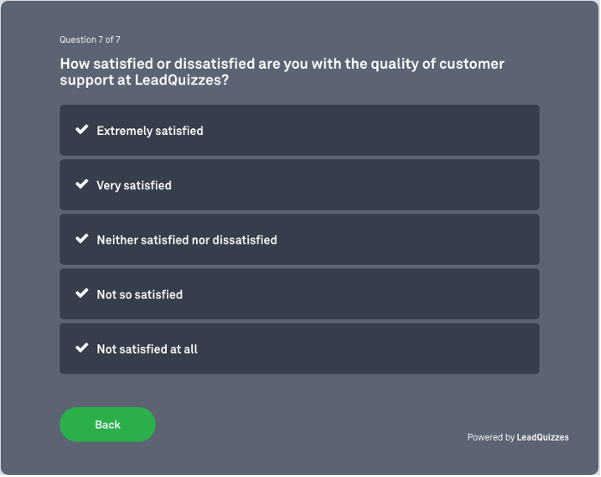
2. Open-ended questions
These questions allow respondents to come up with their own answers, as detailed as they’d like to. Open-ended questions are a great way to provide an explanation and deeper insight into the customers’ opinions and impressions. However, it is recommended that you keep the number of these questions as low as possible, usually as a supplement to the previous close-ended questions.

In general, questionnaires should not take too much time and effort from respondents. If they feel like they have to write an essay instead of ticking off a few answers, they are more likely to drop off and not complete the questionnaire.
3. Form questions
These questions are here to provide the information about respondent – their name, email address, education level, income, etc. It may be useful to shed light on the relationship between demographic information and certain answers if you decide to aggregate and analyze gathered data. If you are using a questionnaire to respond to a specific request, the form questions are usually there to help you reach out to the customer quicker and respond to their request more efficiently.
One of the most important things in a questionnaire is to minimize potential bias in questions and answers. If you want to learn how to create neutral questions and adequate Likert scale answers, click here. On this link, you will find a detailed patient satisfaction survey, which you can also use in the form of a questionnaire.
If you’re looking to utilize the full power of this type of survey questions, you may want to check out our ultimate guide on how to create a Likert scale questionnaire, where we’ve broken the process of creating Likert scale questions into the smallest of pieces.
Questionnaire example
We created a few mock surveys/questionnaires to show you how an online questionnaire should look like. Here is an example of a questionnaire measuring customer satisfaction. However, we created another questionnaire for a specific purpose – customer complaint questionnaire. You can access it here.
You can use this questionnaire to determine how satisfied the customer was with the resolution of their complaint about your product or service. The best way to distribute this type of questionnaire is to send it in email form. You can automate this process using email automation software – for example, the questionnaire could be automatically sent to each customer whose complaint has been marked as resolved by customer service.
Start off by creating a landing page that clearly states the purpose of a questionnaire. It is also important to inform the respondent about confidentiality and the way their feedback will be used.
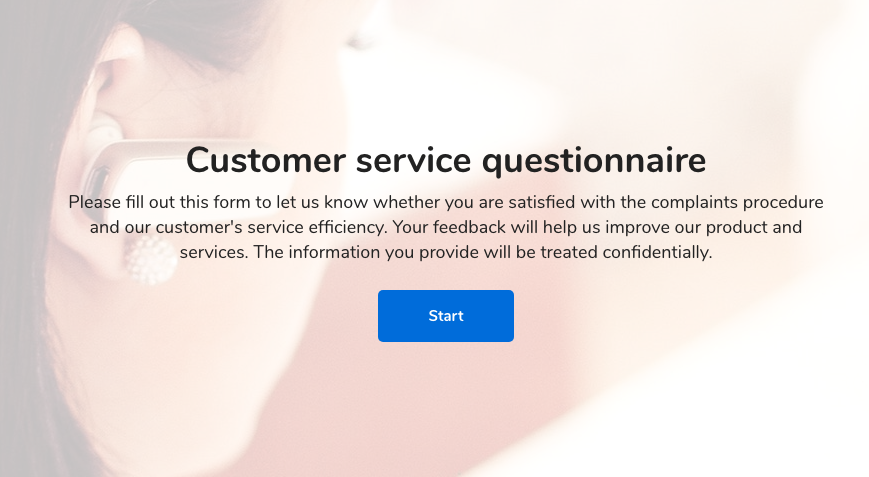
You can start off a questionnaire with a form. Depending on the information you need, as well as the nature of the complaint and product/service, you can ask for the customer’s name, contact information, complaint ticket number, type of complaint etc. You can use this form at the beginning of the questionnaire, or move it to the end.
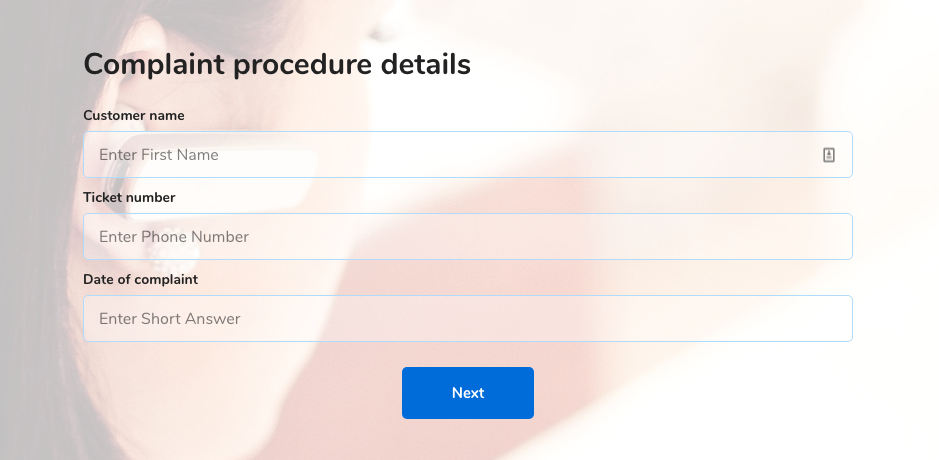
Our first question refers to the information the customer could get about the complaint process. It will help you determine how easy it is for customers to reach out to your customer service.
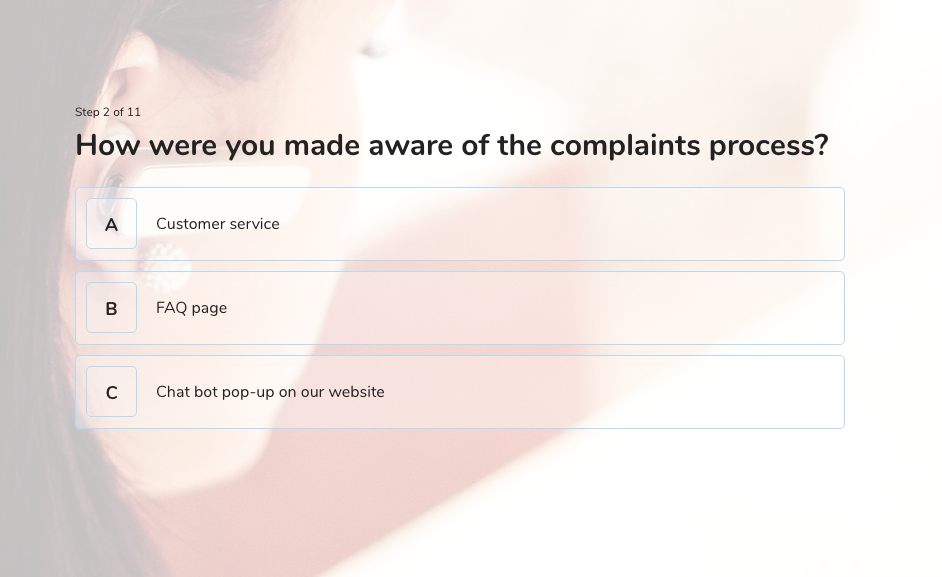
Whether you use a complaint form on your website or have the customer send an email to your customer service, you want to know how easy the process of filing a complaint is.
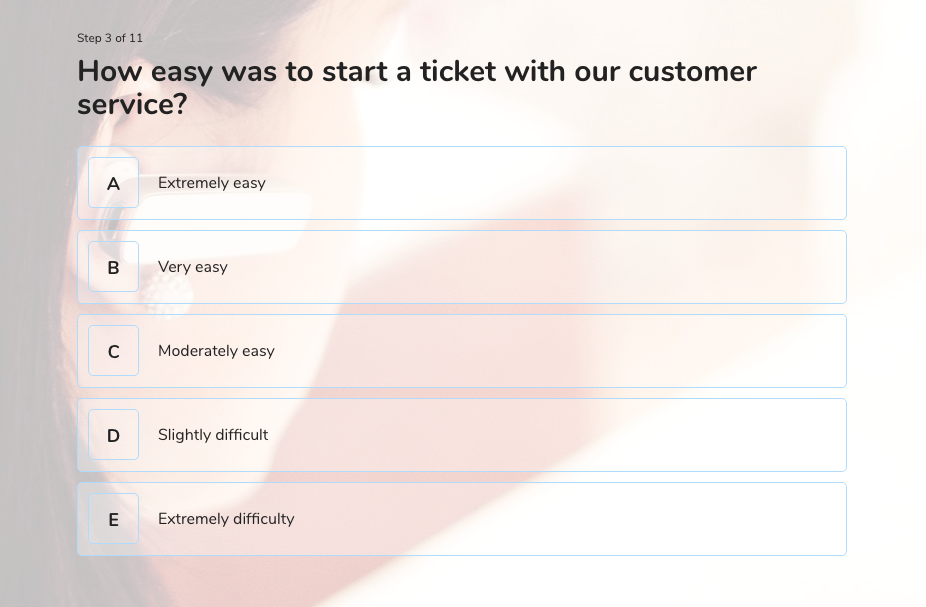
We used the Likert scale in this question, while the follow-up question was a simple yes/no.
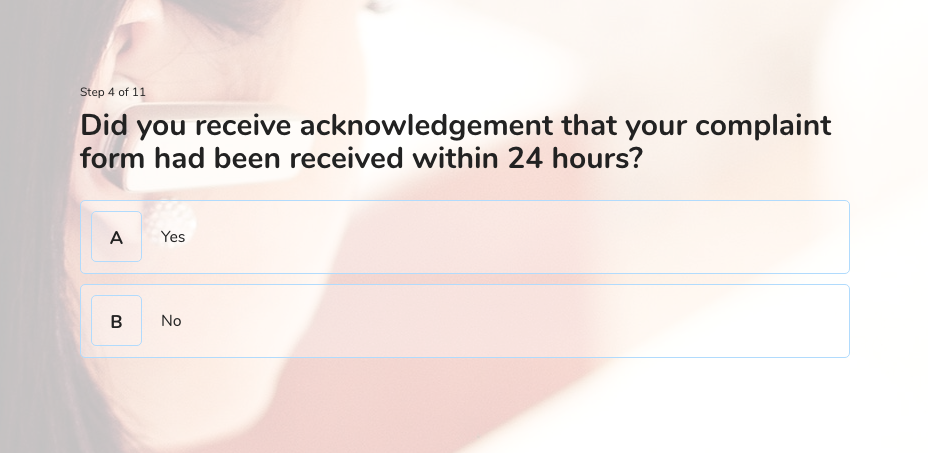
In this question, however, we played around with the Likert scale – we went for the three options. The first one is good, the middle one is acceptable, and the third one is unacceptable. As you can see, while the options are on a certain “scale,” the answers are adjusted to the question and your specific business standards.
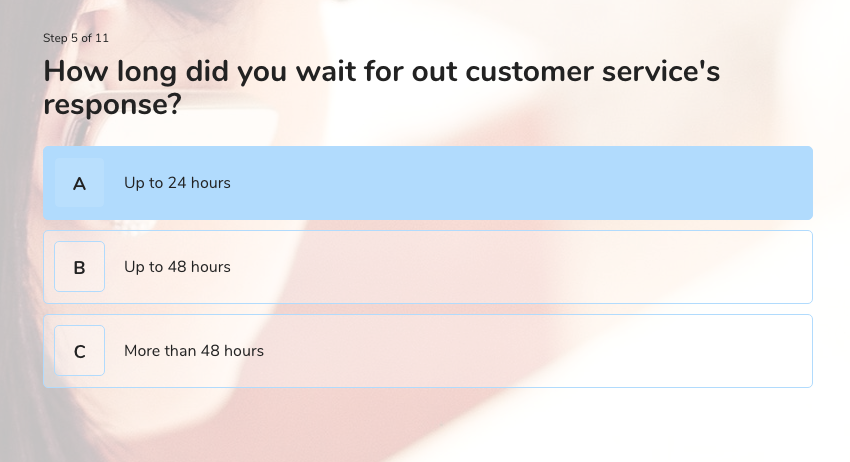
In the follow-up question, we used the standard 5-degree answer, again, fitting to the specific situation and the scale of one’s own business standards.
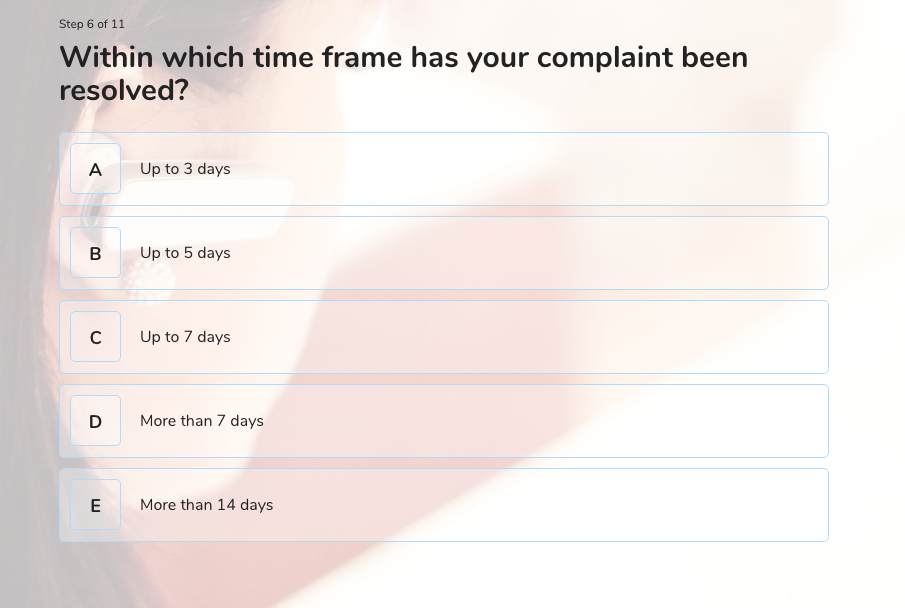
The follow-up questions refer to the efficiency and the quality of communication with the customer service, as well as the overall complaint procedure experience.
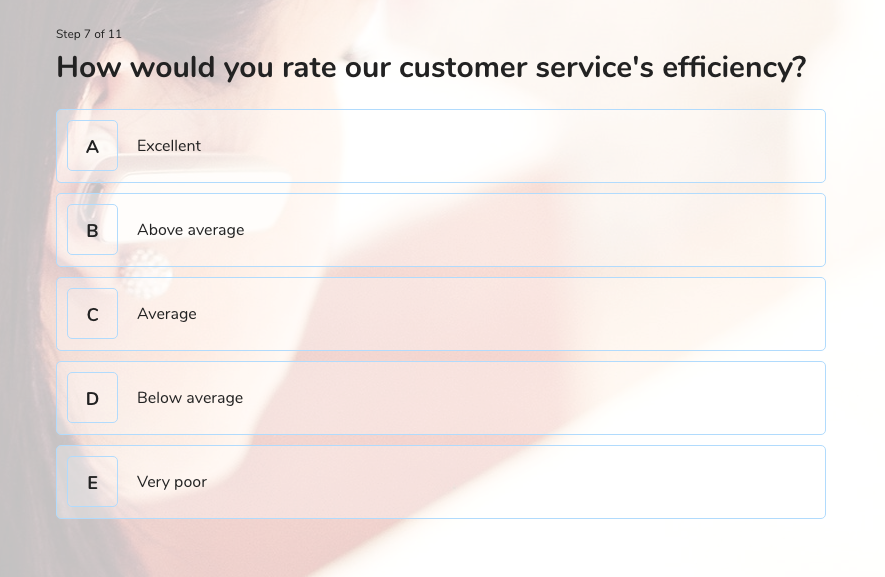
We included only one open-ended question, allowing the customer to add suggestions or comments that further clarify the previous answers.
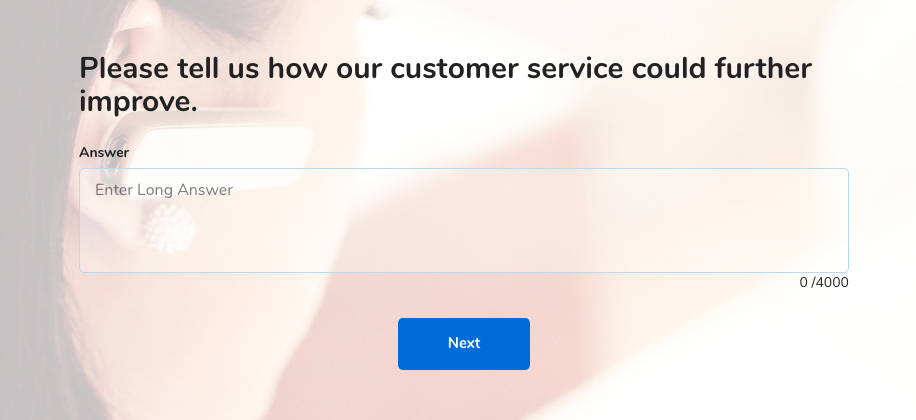
As we pointed out previously, you can use this questionnaire as the way to analyze an individual customer’s experience – or you can aggregate the data over an extended period, and analyze it to draw conclusions about your customer service’s overall performance.
Conclusion
If you like how this questionnaire looks like, why wouldn’t you try to create one on your own? All you have to do is to sign up for LeadQuizzes here for free, and then follow this step by step guide on how to use this platform to make a questionnaire or survey.